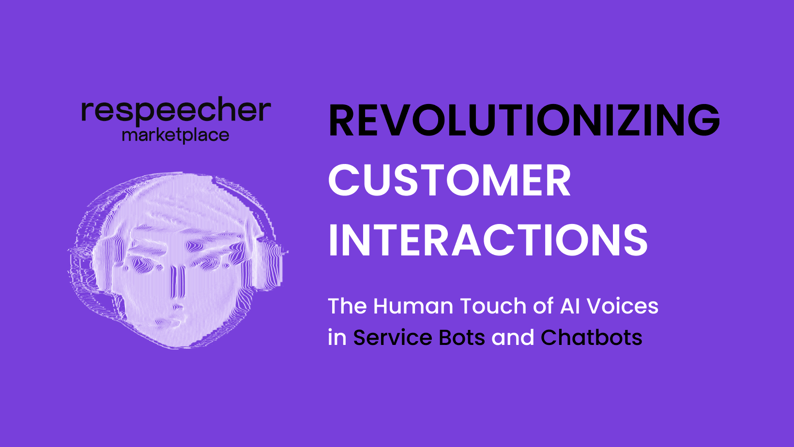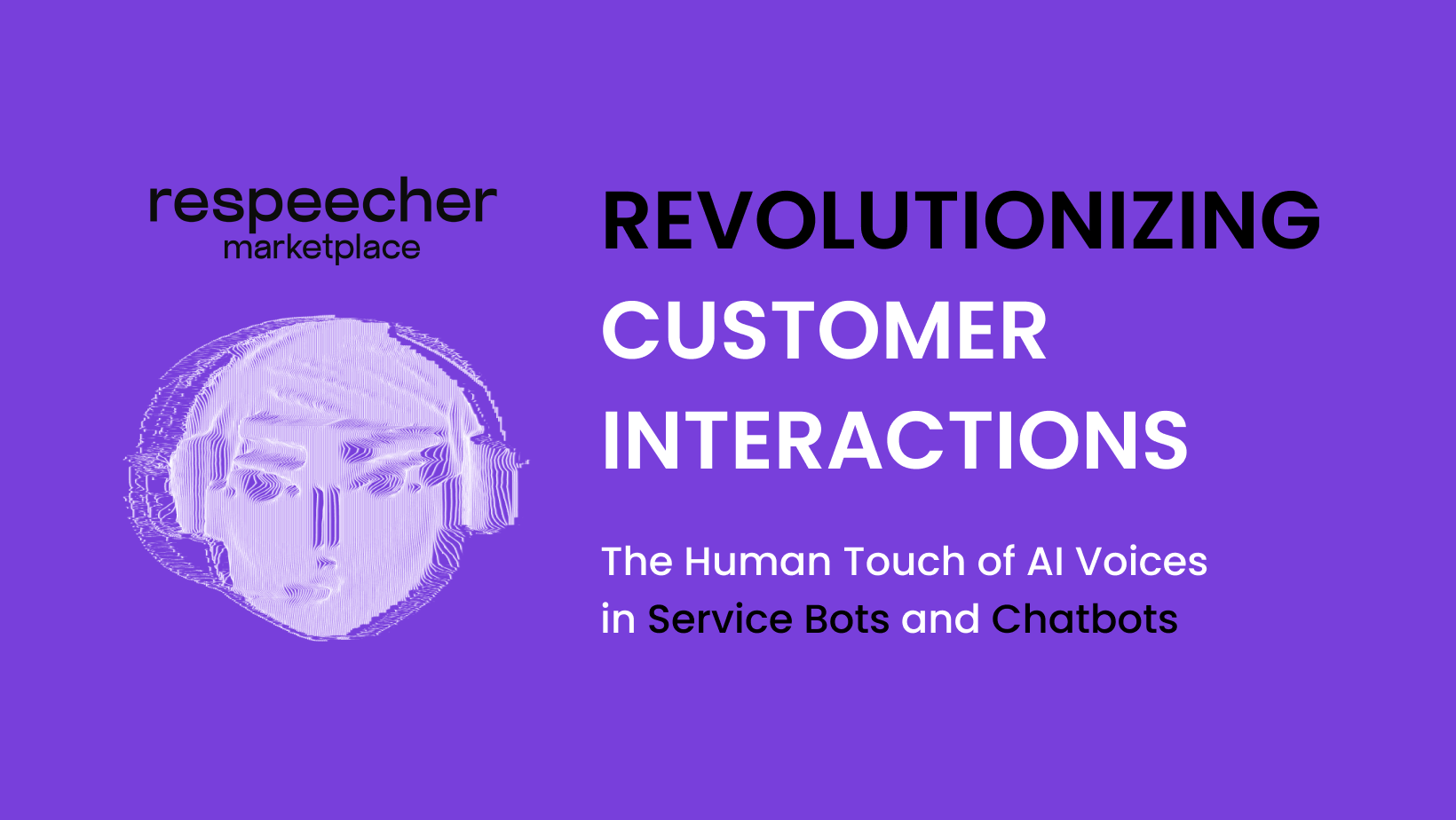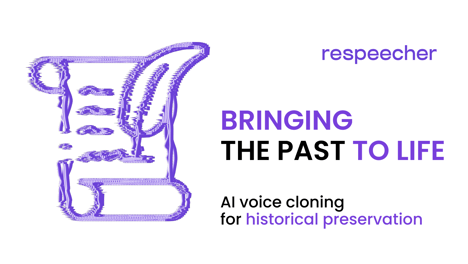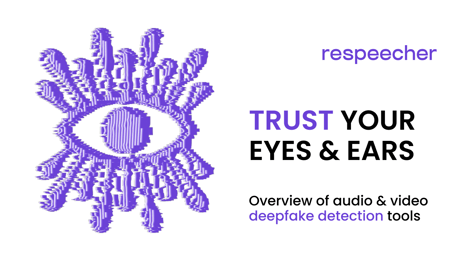Revolutionizing Customer Interactions: The Human Touch of AI Voices in Service Bots and Chatbot

Businesses increasingly turn to chatbots and customer service bots as pivotal components of their customer service strategies. These automated systems have revolutionized how organizations engage with clients, offering round-the-clock assistance and streamlined solutions to various inquiries. Integrating AI voices injects a distinct human touch into automated customer interactions. While text-based chatbots have long been the norm, AI voice technology elevates the user experience by emulating natural conversation patterns and vocal nuances.
Overview of AI Voice Technology in Chatbots
AI voice technology represents a groundbreaking advancement in conversational AI, enabling chatbots to engage users through lifelike interactions that closely resemble human conversation. At the core of this technology lie two key components: voice cloning and natural language processing (NLP), which work in tandem to facilitate seamless communication between users and chatbots.
Voice synthesis, a facet of speech synthesis technology, is the key to making talking bot sound more human. Voices that chatbots use are highly accurate due to advanced algorithms and deep learning techniques to analyze extensive audio data. Chatbots can use advanced algorithms and deep learning techniques to analyze extensive audio data to create highly accurate human voice replicas. This process enables bots to speak naturally and expressively and adapt their tone and rhythm to match the conversation's context, making them more relatable and engaging for users.
Natural language processing is the backbone of AI voice technology, empowering chatbots to comprehend and interpret user queries with exceptional accuracy. Using sophisticated algorithms, NLP can dissect text inputs' syntactic and semantic structure, extracting crucial insights and deciphering user intent. This capability allows customer service bots to handle complex requests, deduce context, and generate pertinent responses in real time, thereby fostering more meaningful and intuitive interactions, a significant boon for customer service.
The integration of AI voice technology into chatbots enables these digital assistants to deliver human-like interactions that are both engaging and relatable. By harnessing the power of voice cloning and NLP, voice-enabled service bots can converse with users in a manner that mirrors natural conversation, complete with inflections, pauses, and colloquialisms. Emotional AI enhances the user experience and fosters a sense of familiarity and empathy, crucial elements in building trust and rapport with customers.
Benefits of Integrating Voice AI in Customer Service
Integrating AI in customer service offers many benefits, revolutionizing the efficiency and quality of interactions.
- Improved Efficiency: Voice AI streamlines customer service processes by enabling users to interact with chatbots using natural language spoken queries, eliminating the need for typing. This accelerates the resolution of customer inquiries, reducing wait times and enhancing overall service efficiency.
- Enhanced Quality of Service: Voice AI leverages emotional tone-matching capabilities to enable customer service bots to adapt their responses to match users' emotional cues. This empathetic interaction fosters a more profound customer connection, increasing satisfaction and improving brand loyalty.
- Consistency: Synthetic voices deliver consistent responses to customer inquiries, ensuring that all customers receive the same level of service regardless of the time of day or the agent they interact with.
- Scalability: AI generated voices can easily be scaled to accommodate fluctuations in call volumes, ensuring that businesses can maintain high levels of customer service during peak periods without hiring additional staff.
- Response Speed: Synthetic voices facilitate faster response times by processing spoken queries in real time and delivering immediate, contextually relevant answers. This rapid turnaround time enhances the user experience, ensuring customers receive timely assistance and support.
- Handling Simultaneous Requests: AI generated voices equip chatbots with the ability to handle multiple inquiries simultaneously, catering to the needs of numerous users concurrently. This scalability enhances operational efficiency, allowing businesses to manage high volumes of customer interactions without compromising quality.
Tips to Humanize Chatbots
- Understand Your Audience: Tailor your chatbot's persona and language to resonate with your target audience, ensuring that interactions feel relevant and relatable. Meanwhile, synthetic voices emulate natural speech patterns, including pauses, colloquialisms, and informal language. This creates a conversational tone that feels authentic and engaging.
- Mimic Human Speech Patterns: Study real human conversations to emulate natural speech patterns, including pauses, colloquialisms, and informal language. This creates a conversational tone that feels authentic and engaging.
- Develop a Distinct Personality: Give your chatbot a unique personality that aligns with your brand identity and audience's preferences. Consistency in tone and demeanor fosters a sense of familiarity and trust.
- Offer Personalization Options: Allow users to customize their AI chatbot experience by choosing from different tone options, such as friendly, professional, or casual. This customization enhances customer engagement and satisfaction, catering to individual preferences.
Subtitling and Localization in Chatbots
Subtitling and localization are pivotal in creating a multilingual customer interaction technology, ensuring that chatbots can effectively engage with users across diverse linguistic and cultural backgrounds.
Businesses often serve customers from various regions and linguistic communities. Localization allows customer service bots to adapt their language, content, and cultural references to resonate with specific target audiences, making interactions more relevant and meaningful.
Also, localization and subtitling provide a more seamless and user-friendly experience for non-native speakers. When chatbots communicate in users' native languages and incorporate familiar cultural references, they reduce language barriers and facilitate clearer communication. This, in turn, enhances user satisfaction and encourages continued engagement with the chatbot platform.
Localized content and subtitles offer a pathway to essential information and services for users with limited proficiency in the primary language of a chatbot. By providing support in multiple languages, businesses ensure that their customer service remains accessible to a broader audience, including those who may otherwise struggle to communicate effectively.
Voice AI can be tailored to different languages and cultural contexts through several methods:
- Language-Specific Training: Voice AI models can be trained on datasets in multiple languages to develop proficiency in understanding and generating speech in diverse linguistic contexts.
- Cultural Sensitivity Training: This includes adjusting speech patterns, tone, and content to align with cultural expectations and avoid potential misunderstandings or offensive language.
- Localized Content Generation: This involves maintaining a repository of language-specific content, including greetings, FAQs, and product information, which can be tailored to match the user's linguistic and cultural preferences in real time.
- Continuous Learning and Adaptation: Voice AI systems can employ machine learning algorithms to continuously learn from user interactions and feedback, refining their language understanding and voice AI generator capabilities.
Challenges and Ethical Considerations
Implementing voice AI in chatbots presents several challenges, including:
- Privacy Concerns: Voice AI systems may collect and process sensitive user data, raising concerns about privacy and data security.
- Data Quality: Obtaining sufficient and diverse data sets can be challenging, particularly for languages and dialects with limited resources.
- Bias and Fairness: ai audio systems may inadvertently perpetuate biases present in training data, leading to discriminatory outcomes.
- Accessibility: While voice AI technology can improve accessibility for users with disabilities or limited literacy, it may inadvertently exclude individuals with speech impediments or non-standard accents.
Respeecher, a provider of voice synthesis technology, is committed to ethical standards by prioritizing transparency, consent, and respectful use of AI technology. Here's how Respeecher addresses AI ethics:
- Transparency: Respeecher is transparent about its voice cloning technology and its purposes. Users are informed about how their recordings will be used and have the opportunity to provide consent before their voice is cloned or made with voice synthesizer.
- Consent: Respeecher prioritizes obtaining explicit consent from individuals before cloning their voice or using their recordings for commercial purposes. Users can control their personal data and choose whether to participate in voice cloning projects.
- Respectful Use of AI Technology: Respeecher is committed to using AI technology responsibly and ethically. The company adheres to ethical guidelines and best practices in using an AI speech generator, ensuring that voice cloning is used for legitimate purposes and does not infringe on individuals' rights or privacy.
Conclusion
Personalization in AI is vital in today's customer-centric landscape, and AI voice technology enables businesses to tailor interactions to individual preferences, needs, and cultural backgrounds. Companies can deliver highly personalized and relevant assistance through voice-enabled chatbots, building stronger customer connections and driving loyalty.
Voice-enabled customer service bots can handle inquiries quickly and accurately, reducing wait times and empowering businesses to serve a larger volume of customers with minimal human intervention. This efficiency enhances customer satisfaction and boosts operational productivity and scalability.
As businesses explore the potential of AI voices technology to enhance their AI customer support capabilities, we invite you to discover the tools and services available at the Respeecher Voice Marketplace. It offers a range of solutions to elevate your customer service strategy and drive meaningful engagement. Explore the possibilities of voice synthesis today and transform how you engage with your customers.
FAQ
AI voice technology enhances customer service by enabling voice-enabled chatbots that provide personalized announcements and efficient responses. With voice cloning and speech synthesis technology, chatbots can emulate human speech, offering natural, empathetic, and context-aware interactions.
AI voice synthesis enhances chatbots by adding a human-like touch to interactions. It allows voice-enabled chatbots to adapt their tone, rhythm, and emotion, creating personalized customer service that fosters engagement and satisfaction while improving efficiency in resolving inquiries.
Localization allows chatbots to understand and respond in multiple languages, providing localized customer interactions. By tailoring content to specific cultures and languages, AI voice technology ensures seamless communication, increasing accessibility and user satisfaction in diverse regions.
Ethical considerations for AI voice technology include privacy concerns, ensuring consent before voice cloning, and avoiding bias. Providers like Respeecher's voice cloning emphasize transparency and respectful AI use, prioritizing data security and ethical standards in customer interactions.
Respeecher's voice cloning technology enhances AI-powered chatbots by offering high-quality voice synthesis. It provides customizable, natural-sounding voices that support multilingual and personalized chatbot interactions, enabling businesses to create more engaging and culturally sensitive customer experiences.
Glossary
AI voice technology
Voice-enabled chatbots
Chatbot personalization
Speech synthesis technology
Respeecher Voice Marketplace

- voice synthesis
- machine learning
- AI voices
- AI voice generator
- chatbots
- conversational AI bots
- AI chatbots
- Respeecher Voice Marketplace
- AI Ethics
- voice changer
- AI voice changer
- customer service
- voice ai
- customer engagement
- AI speech
- conversational AI
- natural language processing
- AI in customer service
- customer service bots
- AI chatbot experience
- voice-enabled service bots
- customer interaction technology
- AI customer support,
- ai in customer support
- personalization in AI
- ai sound generator





